BOOK OF HOURS, use of Rouen, ILLUMINATED MANUSCRIPT ON VELLUM
BOOK OF HOURS, use of Rouen, ILLUMINATED MANUSCRIPT ON VELLUM [Rouen, c.1520] 170 x 72mm. iv paper + 115 + iv paper leaves: 1 6, 2 8, 3 4, 4-14 8, 15 9(v an inserted singleton), 28 lines written in brown ink in a hybrid bookhand between two verticals and 29 horizontals ruled in red, justification: 134 x 48mm, rubrics in red, versal initials touched yellow, one-line initials of liquid gold on alternate grounds of blue and red, similar line-endings, two- to four-line initials with staves of white and grey acanthus on red, on gold grounds, FOURTEEN HALF-PAGE MINIATURES in architectural frames, above text with accompanying three-quarter page borders of red, blue and grey acanthus and sprays of naturalistic flowers and fruit on a liquid gold ground, and a HALF-PAGE MINIATURE within an architectural frame. (Miniatures and borders closely cropped, some with slight loss of image, occasional slight rubbing to edges of some borders, light crease across one border, ff.35-6 with neat, partial cuts at inner margin as if they were to be excised). 19th-century brown crushed morocco by Zaehnsdorf (stamp on verso of first endleaf), boards panelled in blind with ropework and scrolling acanthus and flowerhead tools, inlaid olive green morocco doublures with gilt central strapwork arabesque and corner fleurons, gilt edges. PROVENANCE: 1. The style of the illumination, together with the liturgical uses of the Offices, and the feasts included in the calendar (with St Marcial, 3 July, and St Romain, 23 October, in red), indicate that this Hours was made in Rouen. The woman for whom it was made is shown kneeling before the Virgin and Child on folio 112. The 'Salvator Mundi' miniature, which differs in style to the rest of the miniatures, appears to have been added after the manuscript was made. It is likely that it was inserted to sit opposite the miniature of Virgin and Child enthroned (f.112) at the request of either the patron or a subsequent owner. 2. Elizabeth F. Scott, 25 December 1890 (inscription on verso of second endleaf). 3. Acquired 14 May 1945. CONTENT: Calendar in French ff.1-6v; Gospel Extracts ff.7-11; Passion according to St John ff.11v-18v; Hours of the Virgin, use of Rouen, with Hours of the Cross beginning f.35v and Hours of the Holy Spirit beginning f.37, ff.19-67v: matins f.19, lauds f.27, prime f.38, terce f.44, sext f.48v, none f.53, vespers f.57, compline f.63; Seven Penitential Psalms and Litany ff.68-80; Office of the Dead, use of Rouen ff.80v-110v; Prayers to the Virgin ff.112-115v. ILLUMINATION: This elaborately decorated manuscript was illuminated by one of the most original and distinctive illuminators of the early 16th century, the Master of the Ango Hours, the artist named after a manuscript made for a member of the Ango family of Normandy (Paris, BnF, n.a.lat. 392). Records show that he was based in Rouen, and although his career may have begun at an earlier date, the majority of his manuscripts appear to have been produced in the 1520s. He was active beyond 1530. The hallmarks of his style rest in graceful figures with vivid gestures and plain pale faces. Drapery is skilfully highlighted with fine gold lines, landscapes and interiors are varied and detailed, with subtle effects of colour evident in the pale greens and blues of distant views and light greys of buildings. All of the miniatures are set in the Master's characteristic architectural frames, which is typical of the Italianate features found in the production of luxurious French manuscripts in the early 16th century. The long narrow dimensions of this Hours also corresponds with printed Horae produced in long octavo form early in the 16th century. Of particular interest is the insertion of the image of Christ, 'Salvator Mundi', facing the miniature of the manuscript's donor kneeling before the Virgin and Child, providing the reader with two poignant images for private devotion. Such images of Christ originally appeared in Books of Hours as a 'vera
BOOK OF HOURS, use of Rouen, ILLUMINATED MANUSCRIPT ON VELLUM
BOOK OF HOURS, use of Rouen, ILLUMINATED MANUSCRIPT ON VELLUM [Rouen, c.1520] 170 x 72mm. iv paper + 115 + iv paper leaves: 1 6, 2 8, 3 4, 4-14 8, 15 9(v an inserted singleton), 28 lines written in brown ink in a hybrid bookhand between two verticals and 29 horizontals ruled in red, justification: 134 x 48mm, rubrics in red, versal initials touched yellow, one-line initials of liquid gold on alternate grounds of blue and red, similar line-endings, two- to four-line initials with staves of white and grey acanthus on red, on gold grounds, FOURTEEN HALF-PAGE MINIATURES in architectural frames, above text with accompanying three-quarter page borders of red, blue and grey acanthus and sprays of naturalistic flowers and fruit on a liquid gold ground, and a HALF-PAGE MINIATURE within an architectural frame. (Miniatures and borders closely cropped, some with slight loss of image, occasional slight rubbing to edges of some borders, light crease across one border, ff.35-6 with neat, partial cuts at inner margin as if they were to be excised). 19th-century brown crushed morocco by Zaehnsdorf (stamp on verso of first endleaf), boards panelled in blind with ropework and scrolling acanthus and flowerhead tools, inlaid olive green morocco doublures with gilt central strapwork arabesque and corner fleurons, gilt edges. PROVENANCE: 1. The style of the illumination, together with the liturgical uses of the Offices, and the feasts included in the calendar (with St Marcial, 3 July, and St Romain, 23 October, in red), indicate that this Hours was made in Rouen. The woman for whom it was made is shown kneeling before the Virgin and Child on folio 112. The 'Salvator Mundi' miniature, which differs in style to the rest of the miniatures, appears to have been added after the manuscript was made. It is likely that it was inserted to sit opposite the miniature of Virgin and Child enthroned (f.112) at the request of either the patron or a subsequent owner. 2. Elizabeth F. Scott, 25 December 1890 (inscription on verso of second endleaf). 3. Acquired 14 May 1945. CONTENT: Calendar in French ff.1-6v; Gospel Extracts ff.7-11; Passion according to St John ff.11v-18v; Hours of the Virgin, use of Rouen, with Hours of the Cross beginning f.35v and Hours of the Holy Spirit beginning f.37, ff.19-67v: matins f.19, lauds f.27, prime f.38, terce f.44, sext f.48v, none f.53, vespers f.57, compline f.63; Seven Penitential Psalms and Litany ff.68-80; Office of the Dead, use of Rouen ff.80v-110v; Prayers to the Virgin ff.112-115v. ILLUMINATION: This elaborately decorated manuscript was illuminated by one of the most original and distinctive illuminators of the early 16th century, the Master of the Ango Hours, the artist named after a manuscript made for a member of the Ango family of Normandy (Paris, BnF, n.a.lat. 392). Records show that he was based in Rouen, and although his career may have begun at an earlier date, the majority of his manuscripts appear to have been produced in the 1520s. He was active beyond 1530. The hallmarks of his style rest in graceful figures with vivid gestures and plain pale faces. Drapery is skilfully highlighted with fine gold lines, landscapes and interiors are varied and detailed, with subtle effects of colour evident in the pale greens and blues of distant views and light greys of buildings. All of the miniatures are set in the Master's characteristic architectural frames, which is typical of the Italianate features found in the production of luxurious French manuscripts in the early 16th century. The long narrow dimensions of this Hours also corresponds with printed Horae produced in long octavo form early in the 16th century. Of particular interest is the insertion of the image of Christ, 'Salvator Mundi', facing the miniature of the manuscript's donor kneeling before the Virgin and Child, providing the reader with two poignant images for private devotion. Such images of Christ originally appeared in Books of Hours as a 'vera
.jpg)
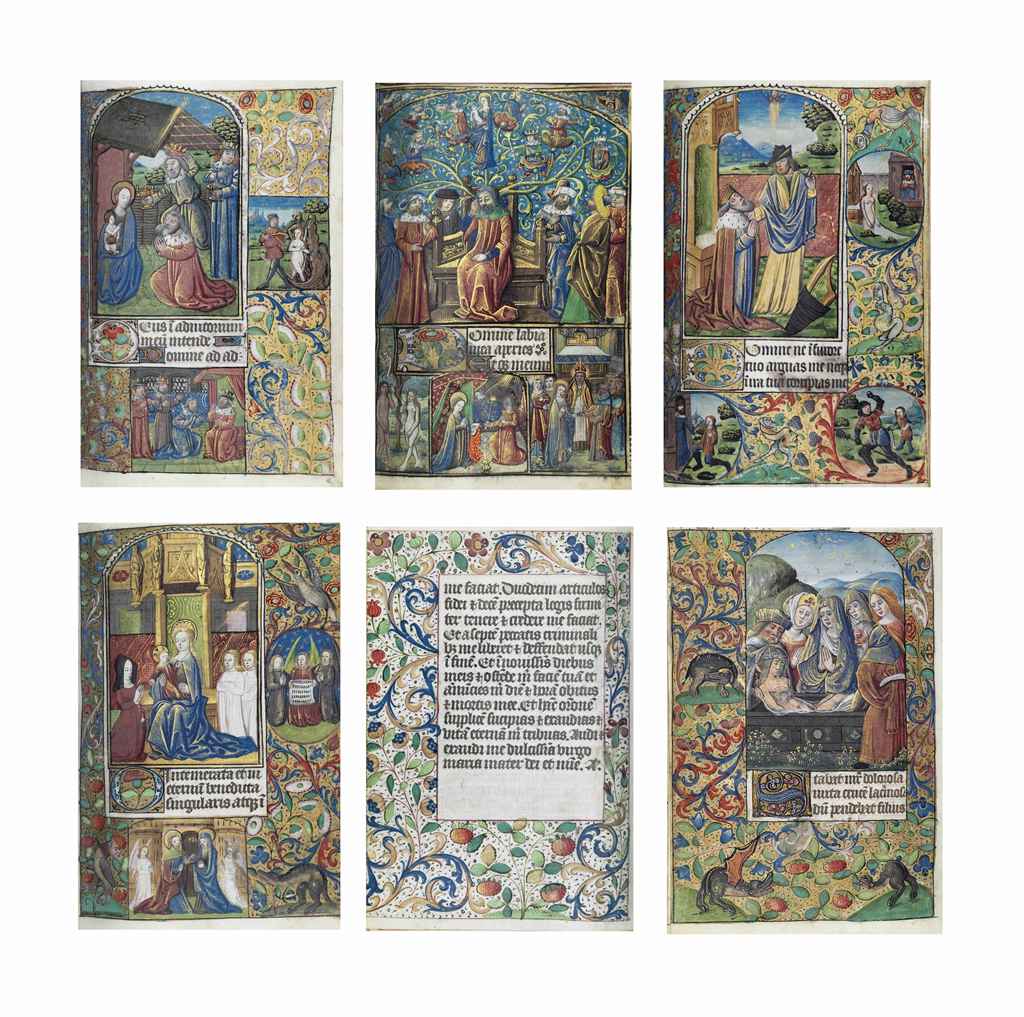
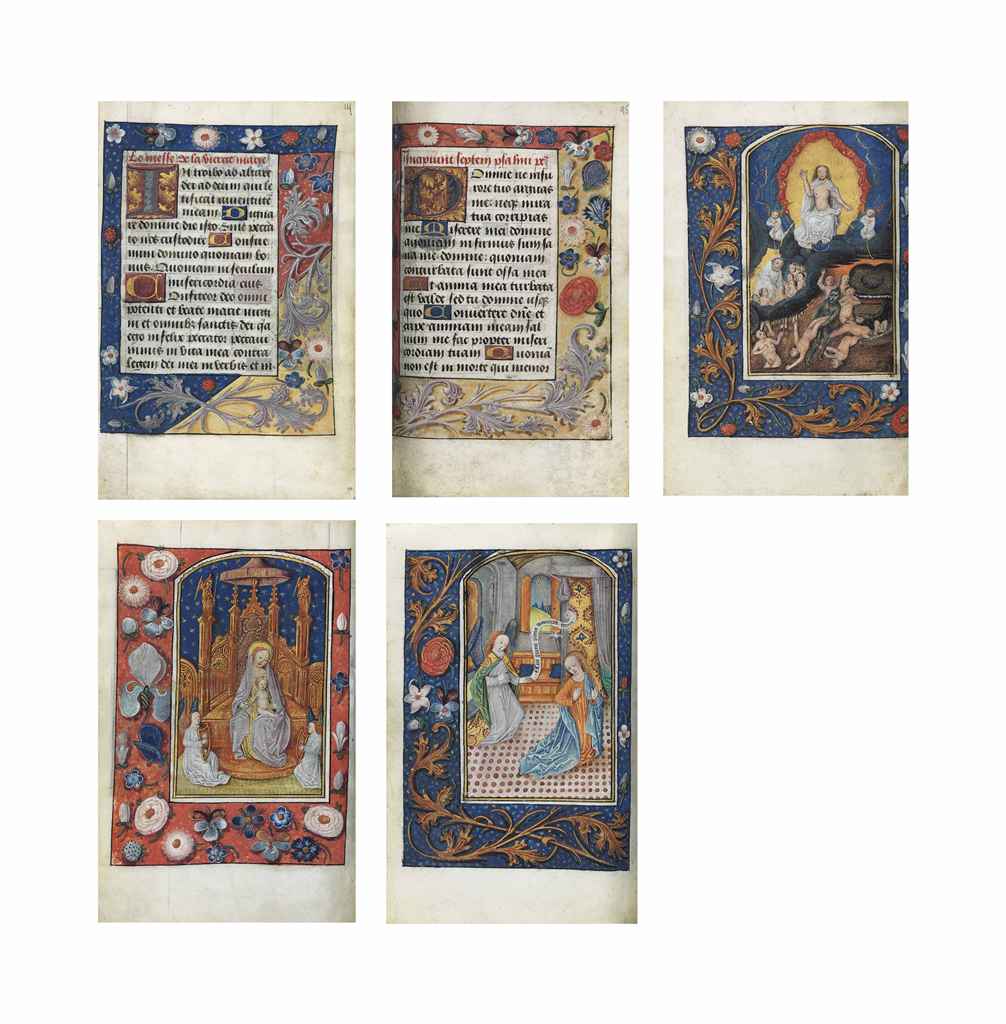
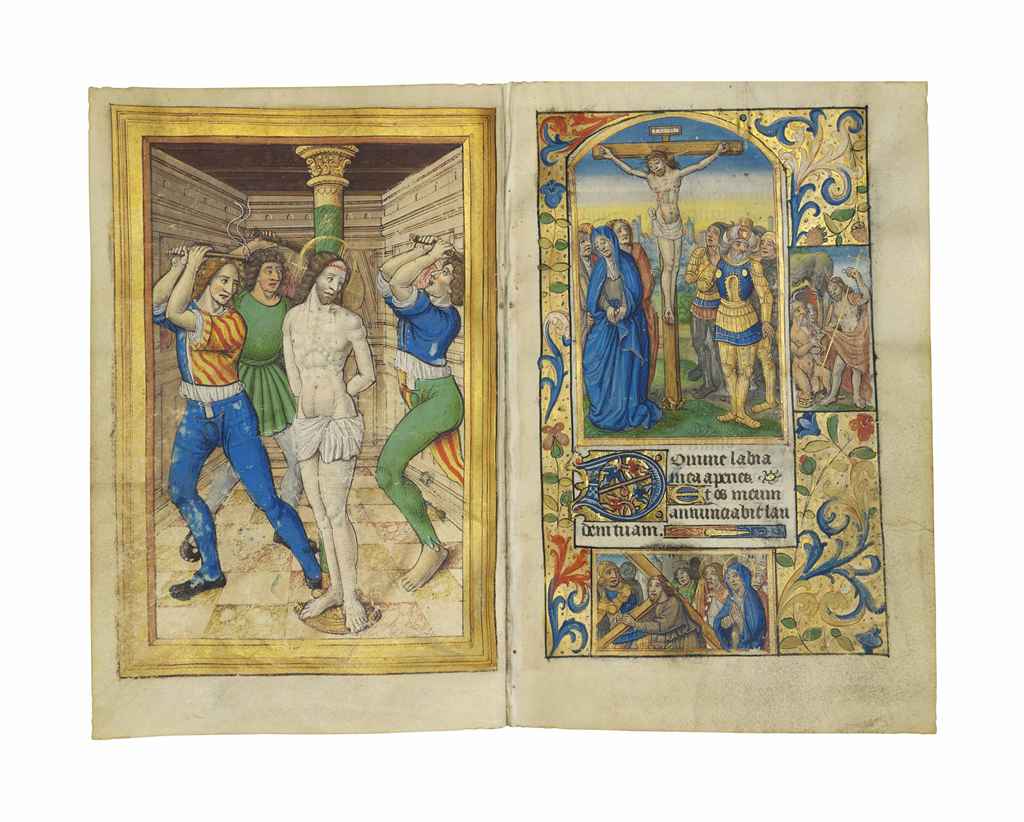
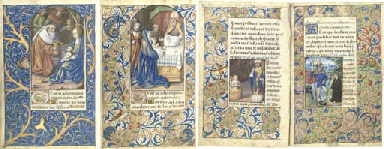
.jpg)
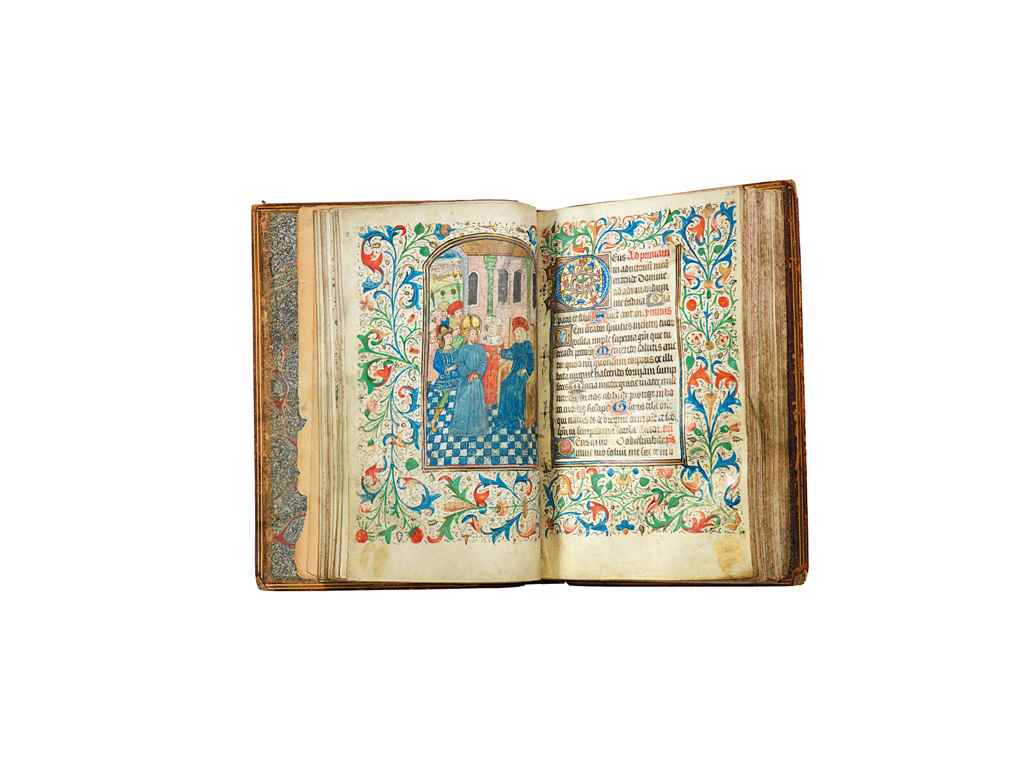


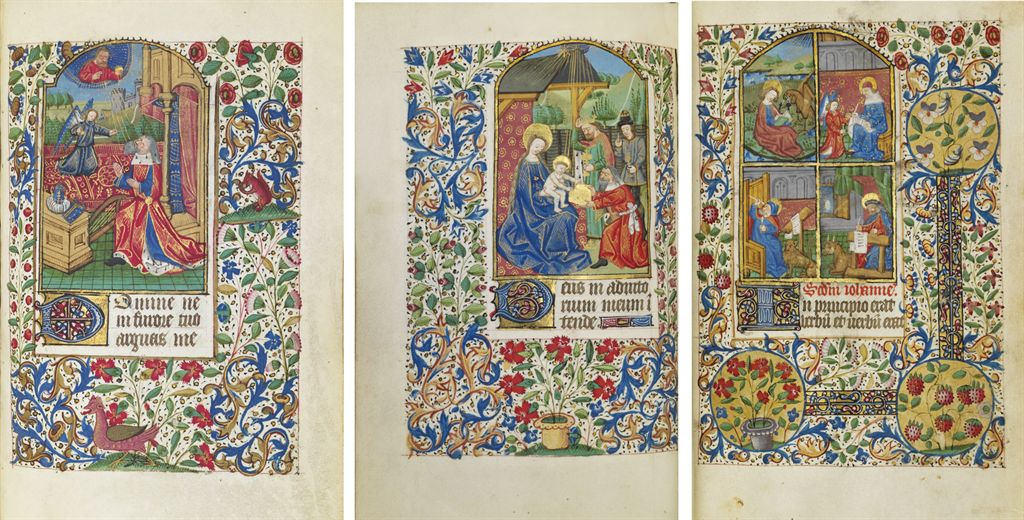
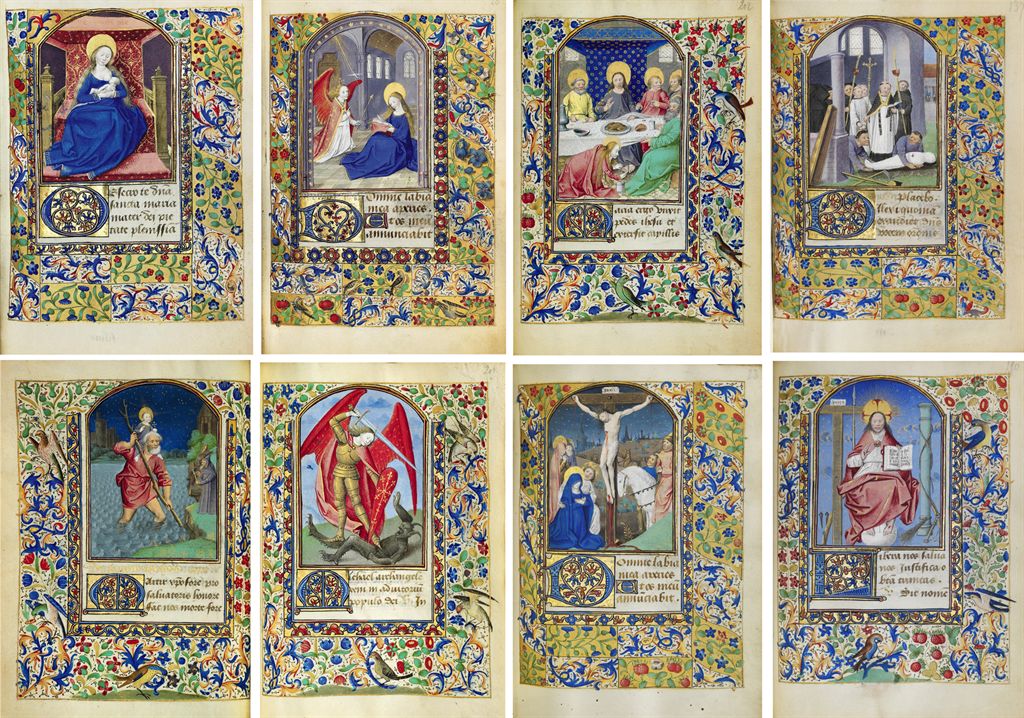
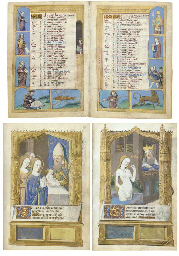
.jpg)


Try LotSearch and its premium features for 7 days - without any costs!
Be notified automatically about new items in upcoming auctions.
Create an alert